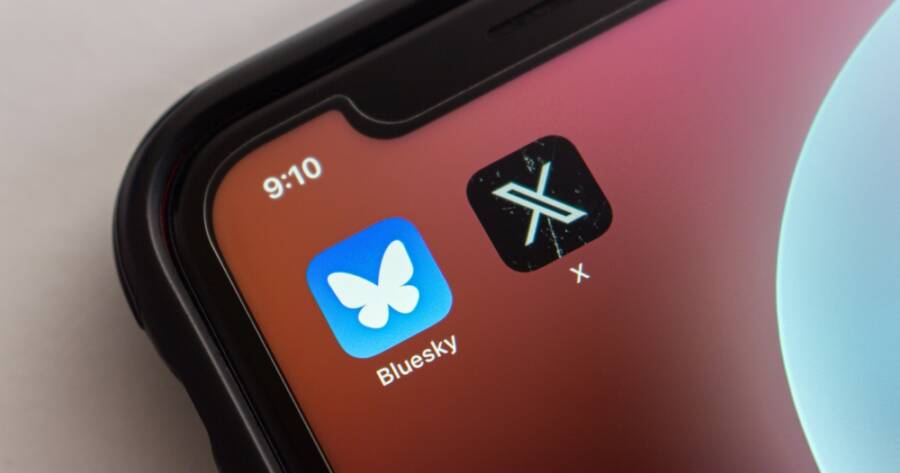The social media landscape has seen massive shifts in recent years, with new platforms emerging to challenge established giants. Bluesky and X (formerly Twitter) are two of the most talked-about contenders. Both offer unique approaches to online interaction, but can they really change the way we engage with social media? Compare these platforms and explore which one could shape the future of social media.
The Rise of Bluesky
Bluesky is a decentralized social media platform created with the aim of rethinking how social networks function. It was initially developed by former Twitter CEO Jack Dorsey, and its primary goal is to provide users with more control over their data and experience. Unlike traditional platforms, Bluesky operates on a decentralized protocol, which means that no single company owns the platform’s data.
This decentralized approach allows for a more open and flexible ecosystem. Bluesky users can choose from a variety of servers, each with different rules and guidelines, creating a more personalized and diverse online experience. This model promotes freedom of speech while aiming to avoid the centralized control often seen in other social media platforms.
The Evolution of X (formerly Twitter)
X, formerly known as Twitter, has been a major player in social media for over a decade. In 2023, Elon Musk’s acquisition of the platform sparked a series of changes aimed at revitalizing the platform. Musk introduced several new features, including a revamped user interface, subscription services, and enhanced focus on artificial intelligence.
One of the key selling points of X is its vast, global user base and established reputation as a go-to platform for breaking news, political discourse, and real-time updates. X also has a strong presence in professional and business spaces, with users relying on it to share industry news and engage in discussions.
Bluesky vs. X: Privacy and Control
When it comes to privacy and user control, Bluesky and X take very different approaches. Bluesky’s decentralized nature allows for more control over user data and gives individuals the ability to create and moderate their own experiences. Users can choose from various servers with different community standards, creating a more tailored environment that aligns with their values and preferences.
On the other hand, X has centralized control over its platform, meaning all user data is stored and managed by the company. This centralized model has raised privacy concerns, especially since the acquisition by Elon Musk, who has made significant changes to the platform’s management and structure. While X provides users with some control over privacy settings, the overall data collection process remains under the control of the company.
For users who prioritize privacy and data ownership, Bluesky may be the more appealing option. However, for those who are looking for a well-established platform with a large user base and a diverse range of content, X still holds significant appeal.
User Experience: Which Platform is More Engaging?
The user experience on Bluesky and X varies significantly due to their differing structures. Bluesky, with its decentralized model, offers a more customizable experience. Users can choose servers that align with their interests, which may result in a more niche and curated feed. This level of personalization could lead to more meaningful interactions, but it also means that Bluesky may not offer the same broad reach that X provides.
X, on the other hand, has a more standardized user experience, with a focus on real-time content and trending topics. It’s a fast-paced platform where users can follow global events and join in on viral discussions. X also benefits from its widespread use among celebrities, politicians, and businesses, making it an essential platform for those seeking a broad audience.
Bluesky’s emphasis on decentralization gives users the ability to curate their feed more effectively, but X’s mass appeal and global reach remain strong factors in its user experience. For those looking for a niche, privacy-focused environment, Bluesky might be the better choice, while X excels at offering a dynamic and fast-moving platform with a diverse range of users.
Which Platform is the Future of Social Media?
Both Bluesky and X have the potential to shape the future of social media, but in different ways. Bluesky’s decentralized approach could pave the way for a more private, user-controlled internet, where people have more autonomy over their data. It’s a platform for those who value freedom of expression and control, though it may face challenges in building a larger user base.
X, with its massive global presence and continued innovation, remains a dominant force in social media. While privacy concerns linger, its ability to adapt and integrate new technologies could help it maintain its status as a leading platform for a wide range of users.
In the end, the future of social media may involve a blend of both approaches, with decentralized networks like Bluesky offering alternatives to traditional, centralized platforms like X. Only time will tell which model will become the dominant force in the ever-evolving world of social media.

